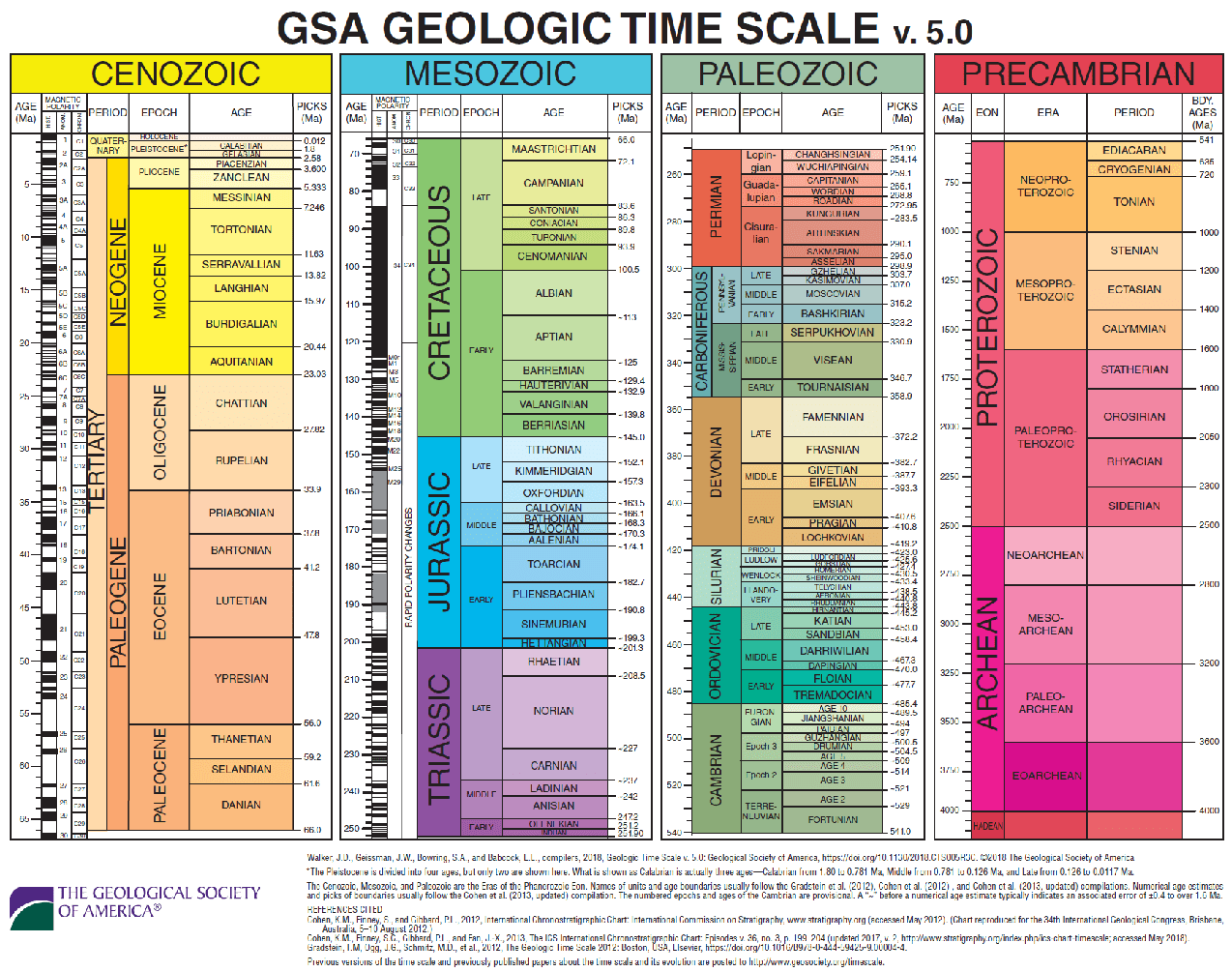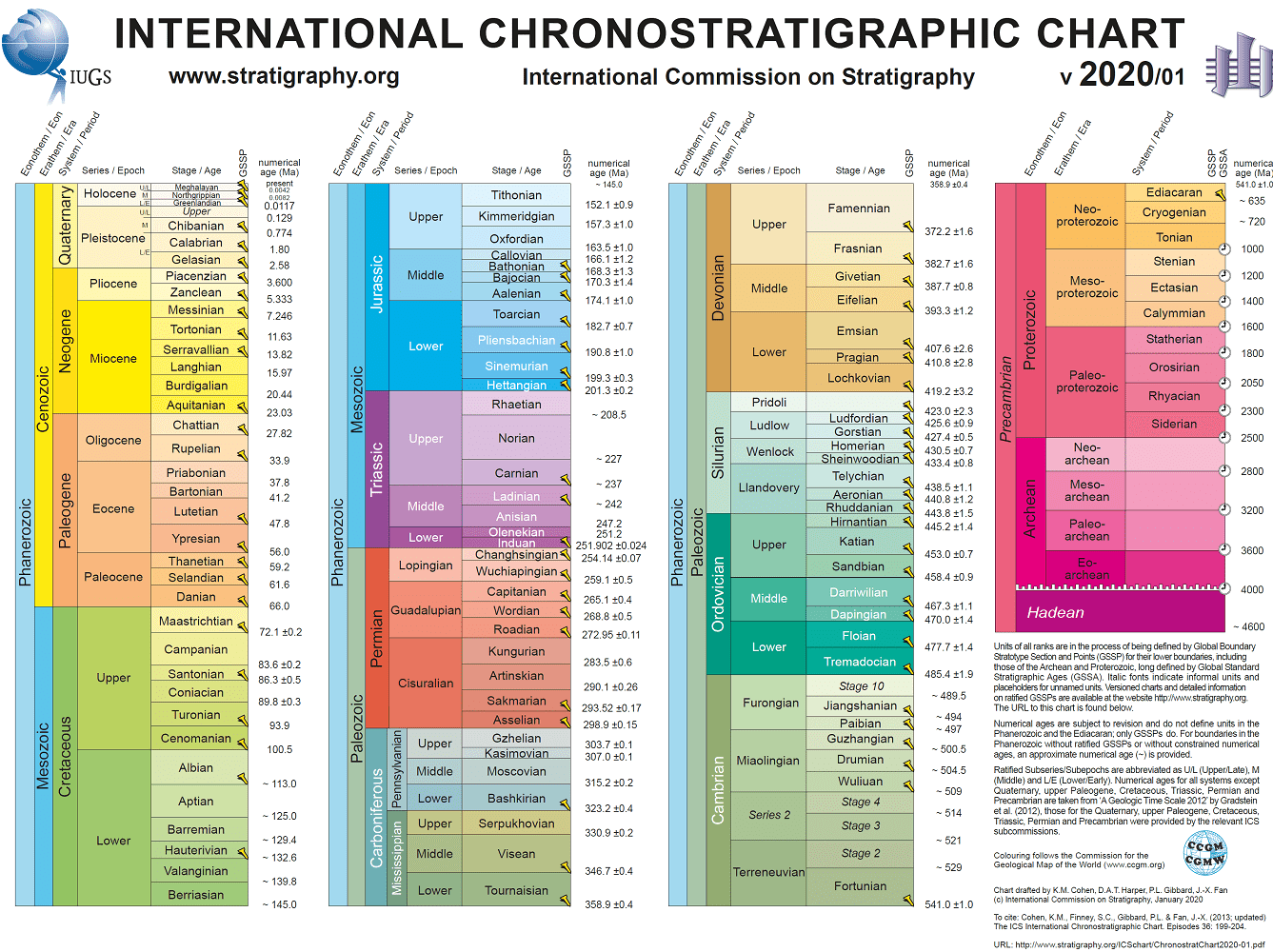Geologic Time Scale
The Geologic Time Scale is an international system used by geologists to classify and identify major geologic events and formations. The geologic timescale essentially categories the earth’s entire geologic (and biologic) history, within a series of defined eons, eras, periods, epochs, and ages.
Updates & Maintenance
The geologic time scale is continuously modified and updated on the basis of breakthrough geologic research, data, and discoveries. The administration of this system is maintained by the Geologic Society of America, the International Union of Geological Scientists, the International Commission on Stratigraphy, and more. As of the year 2020, geologists understand the earth to be approximately 4.6 billion years in age. And the latest addition to the geologic time scale comprises a new “age,” referred to as the Meghalayan Age. This age signified by human-impact on the planet.
Geologic Time Scale by the Geologic Society of America
The image below references the geologic time scale published by the Geologic Society of America, as of the year 2020. Please click the image below to be re-directed to a PDF of the latest geologic time scale, directly from the Geologic Society of America website.

Geologic Time Scale by the International Union of Geological Scientists
The geologic time scale below is published by the International Union of Geological Scientists and is as recent as the year 2020. Please click the timescale below to be re-directed to a PDF of the latest geologic time scale, directly from the International Union of Geological Scientists’ website.


